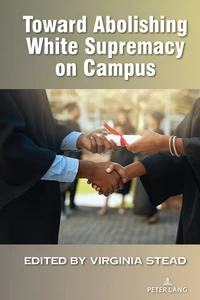results
Search
Search in
Search area
Subject
Category of text
Price
Language
Publication Schedule
Open Access
Publication Year
-
Re-imagining Women Leadership Through Inclusive Community Engagement
HERS-East Africa’s Vision for Gender Equity in Higher Education©2025 Textbook -
Toward Abolishing White Supremacy on Campus
©2023 Textbook -
Confronting Antisemitism on Campus
©2023 Textbook -
Writing for Inclusion
©2024 Edited Collection -
Becoming a Great Inclusive Educator
©2014 Textbook -
Exclusion and Inclusion
Gradations of Whiteness and Socio-Economic Engineering in German Southwest Africa, 1884-1914©2007 Monographs -
Sociodidactique du plurilinguisme et de l’altérité inclusive
Des langues régionales aux langues des migrants©2022 Monographs -
Whatever Happened to Inclusion?
The Place of Students with Intellectual Disabilities in Education©2010 Textbook -
Re-Defining Community
A Discourse on Community and the Pluralism of Today’s World with Personalist Underpinnings©2000 Thesis -
Key Components of Inclusive Education
Monographs -
Educación inclusiva y equitativa de calidad
©2023 Edited Collection



















